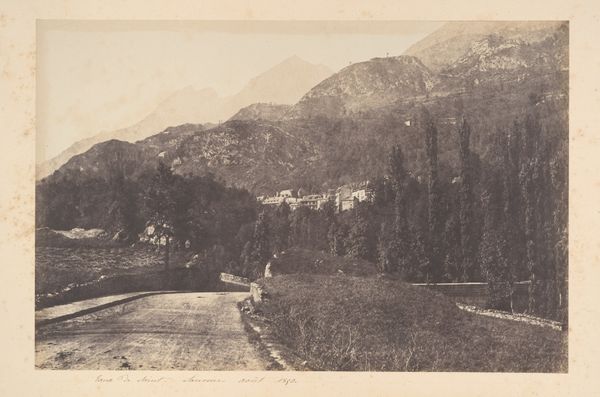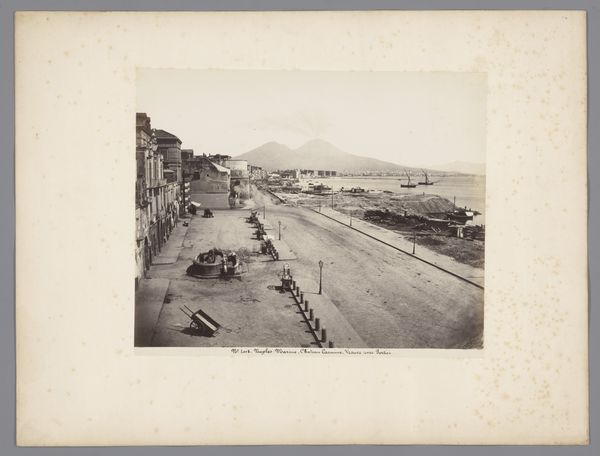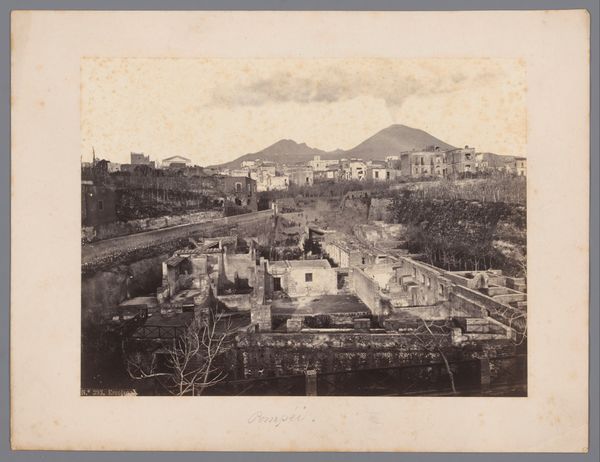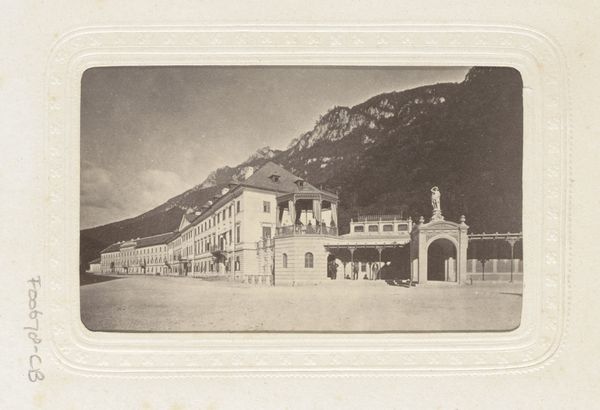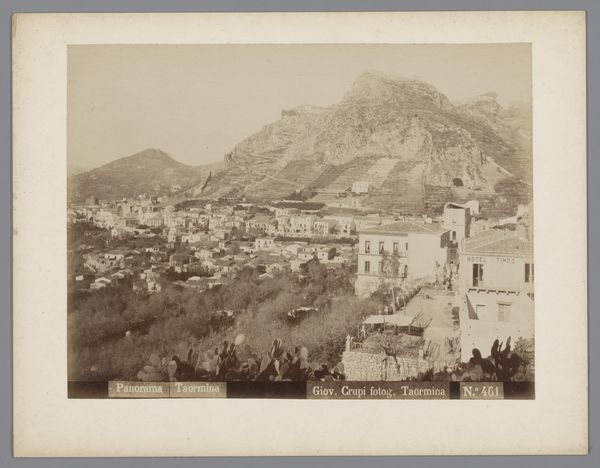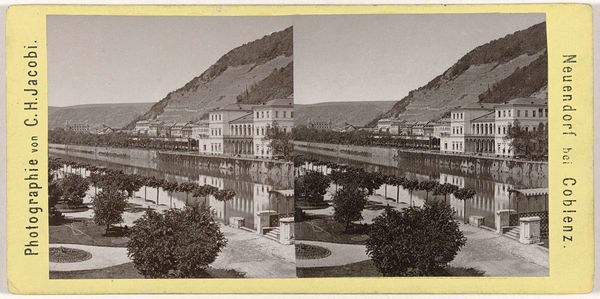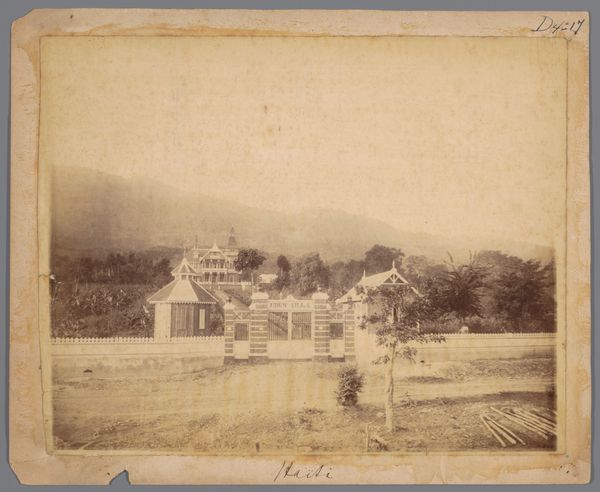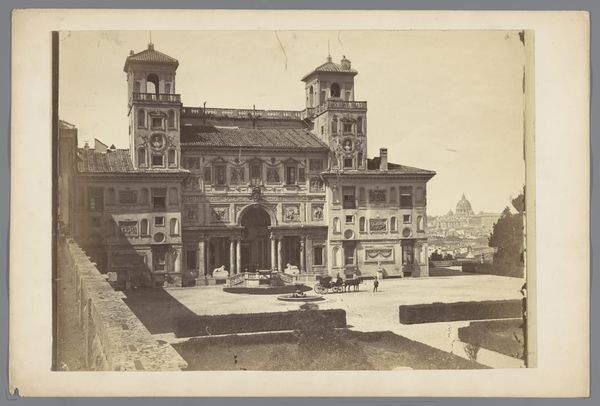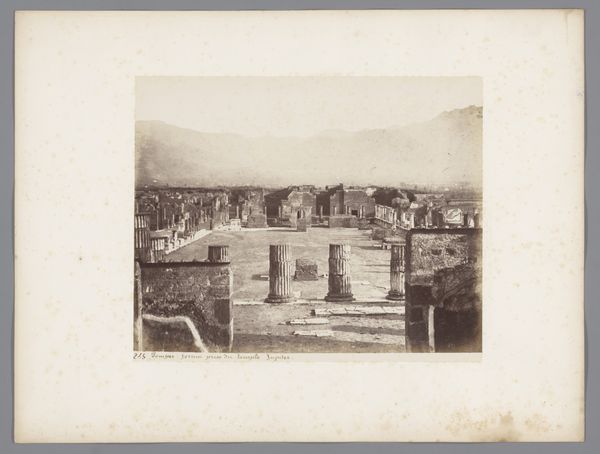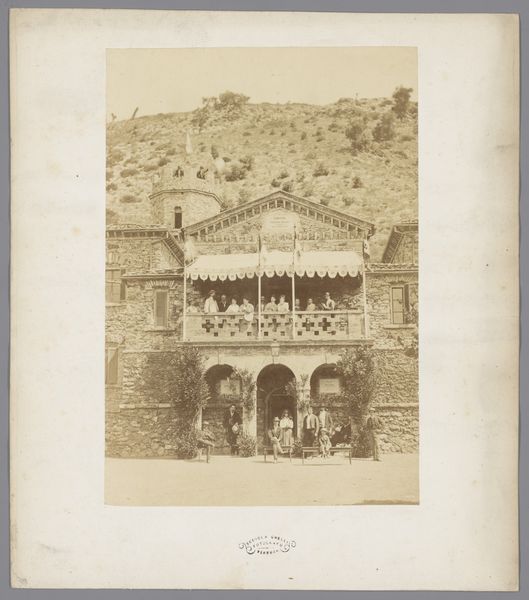
Straatbeeld met Grand Hotel en brug aan de militaire weg in Tiflis c. 1890 - 1900
0:00
0:00
dimitriivanovitchermakov
Rijksmuseum
photography
#
photography
#
orientalism
#
cityscape
Dimensions: height 204 mm, width 267 mm
Copyright: Rijks Museum: Open Domain
Editor: Here we have Dimitri Ivanovitch Ermakov's photograph, "Street View with Grand Hotel and bridge on the military road in Tbilisi", circa 1890-1900. It feels like looking at a film set, the buildings carefully posed with the dramatic backdrop of those mountains. What strikes you about this photograph? Curator: I see here a deliberate staging of empire, of a colonial project finding visual form. Ermakov, operating within a Russian imperial context, frames Tbilisi to emphasize its modernization, signified by the "Grand Hotel," alongside a visual claim to the landscape itself. Editor: Modernization? You mean as a kind of propaganda? Curator: In a way, yes. Think about who the audience might be. These images circulated amongst elites and those interested in investment and trade, projecting an image of stability and progress within a complex geopolitical landscape. It’s not just a pretty picture; it's an assertion of control and an invitation for engagement on Russia's terms. Editor: The inclusion of the military road suggests something similar. Curator: Exactly. The "military road" isn't merely infrastructure; it symbolizes access and dominance. It facilitated the movement of troops and goods, and by prominently featuring it, Ermakov highlights Russia's strategic presence in the region. It serves the public role of legitimizing power, through visual representation. Do you see how the framing differs from typical Orientalist paintings which commonly reinforce Western stereotypes and exoticism? Editor: I do. It's less about romanticism and more about… infrastructure? Seeing it as a form of promoting geopolitical strength rather than romantic exoticism really changes how I view the image. Thank you for providing such insightful points! Curator: It’s important to consider what an image *does* rather than just what it *shows.* Considering images like these as cultural and political documents opens up deeper understanding, for sure.
Comments
No comments
Be the first to comment and join the conversation on the ultimate creative platform.
